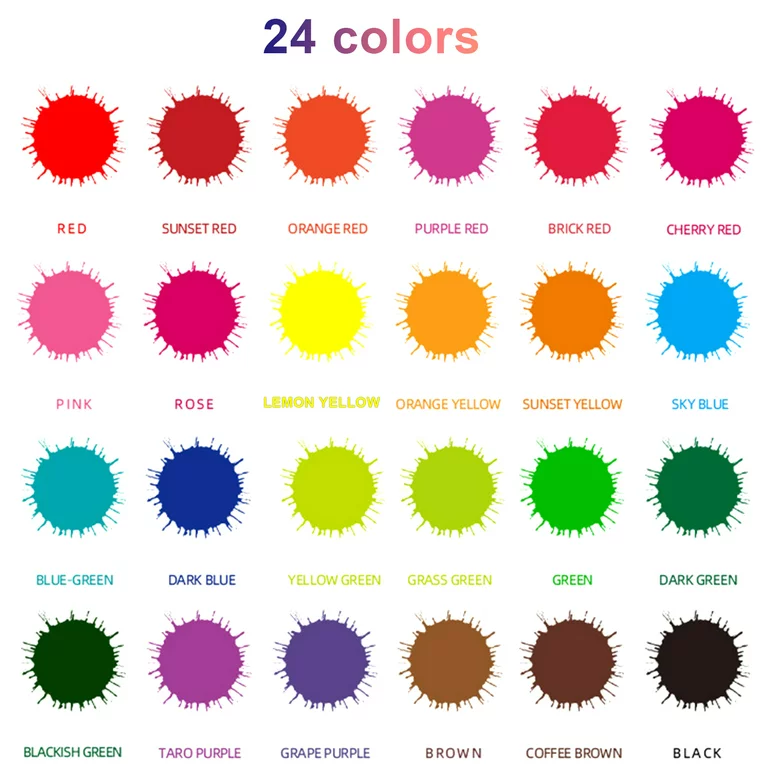Introduction
FD&C colors, a classification of synthetic food dyes approved by the U.S. Food and Drug Administration (FDA), are widely used in the food and beverage industry to enhance the appearance of products. These colors are designated for use in foods, drugs, and cosmetics. This blog explores the various aspects of FD&C colors, including their types, applications, regulatory framework, health considerations, and the role of manufacturers in ensuring safety and quality.
Types of FD&C Colors
FD&C colors are synthetic dyes that are certified for safe consumption. The most common FD&C colors include:
1. FD&C Red No. 40 (Allura Red AC):
Used in beverages, candies, baked goods, and more.
Known for its vibrant red hue.
2. FD&C Yellow No. 5 (Tartrazine):
Found in cereals, snack foods, desserts, and soft drinks.
Provides a bright yellow color.
3. FD&C Blue No. 1 (Brilliant Blue FCF):
Used in ice creams, beverages, and confections.
Known for its vivid blue color.
4. FD&C Green No. 3 (Fast Green FCF):
Applied in cosmetics, pharmaceuticals, and some foods.
Delivers a bright green shade.
5. FD&C Yellow No. 6 (Sunset Yellow FCF):
Found in beverages, sauces, and baked goods.
Offers an orange-yellow color.
6. FD&C Blue No. 2 (Indigotine):
Used in candies, ice creams, and beverages.
Provides a rich blue color.
Applications of FD&C Colors
FD&C colors are integral to the food and beverage industry due to their ability to:
1. Enhance Visual Appeal:
Bright and attractive colors make products more appealing to consumers.
2. Consistent Quality:
Synthetic dyes ensure uniformity in color across batches.
3. Brand Differentiation:
Unique colors can help brands stand out in a competitive market.
4. Consumer Expectations:
Certain foods are expected to be specific colors (e.g., orange cheese, red candies).
Regulatory Framework
The FDA regulates FD&C colors to ensure their safety for consumption. The regulatory framework includes:
1. Certification:
Each batch of FD&C color must be tested and certified by the FDA before it can be used in foods, drugs, or cosmetics.
2. Labeling Requirements:
Products containing FD&C colors must list them on the ingredient label to inform consumers.
3. Acceptable Daily Intake (ADI):
The FDA establishes ADI levels for each FD&C color, which indicates the maximum amount that can be consumed daily without adverse effects.
4. Periodic Review:
The safety of FD&C colors is periodically reviewed based on new scientific data.
Health Considerations
While FD&C colors are generally considered safe, some concerns and controversies have arisen:
1. Allergies and Sensitivities:
Some individuals may have allergic reactions or sensitivities to certain synthetic dyes, such as Tartrazine.
2. Behavioral Effects:
Studies have suggested a possible link between synthetic food dyes and hyperactivity in children, prompting some regulatory bodies to call for caution.
3. Natural Alternatives:
The demand for natural and clean-label products is driving some manufacturers to explore alternatives to synthetic dyes.
Role of Manufacturers
Manufacturers play a critical role in ensuring the safety and quality of FD&C colors:
1. Quality Control:
Strict quality control measures are implemented to ensure that FD&C colors meet regulatory standards.
2. Research and Development:
Continuous research is conducted to develop new dyes and improve existing ones, focusing on safety and effectiveness.
3. Consumer Education:
Manufacturers are responsible for educating consumers about the use of FD&C colors and their safety.
4. Sustainability:
Efforts are being made to develop more sustainable production methods and explore natural alternatives.
Market Trends
The market for FD&C colors is influenced by several trends:
1. Health and Wellness:
The shift towards healthier lifestyles is driving demand for natural and organic food colors.
2. Regulatory Changes:
Stricter regulations and labeling requirements are impacting the use of synthetic dyes.
3.Technological Advancements:
Innovations in food science are leading to the development of more stable and vibrant natural colors.
4. Consumer Preferences:
Increasing awareness and demand for clean-label products are encouraging manufacturers to adopt natural alternatives.
Conclusion
FD&C colors have been a staple in the food and beverage industry, providing vibrant and consistent hues that enhance the visual appeal of products. While they are generally considered safe, ongoing research and changing consumer preferences are driving a shift towards natural alternatives. Manufacturers, regulatory bodies, and consumers all play a role in shaping the future of food coloring, balancing the benefits of synthetic dyes with the demand for transparency and natural ingredients. As the industry evolves, the focus on safety, quality, and sustainability will continue to guide the use of FD&C colors.
